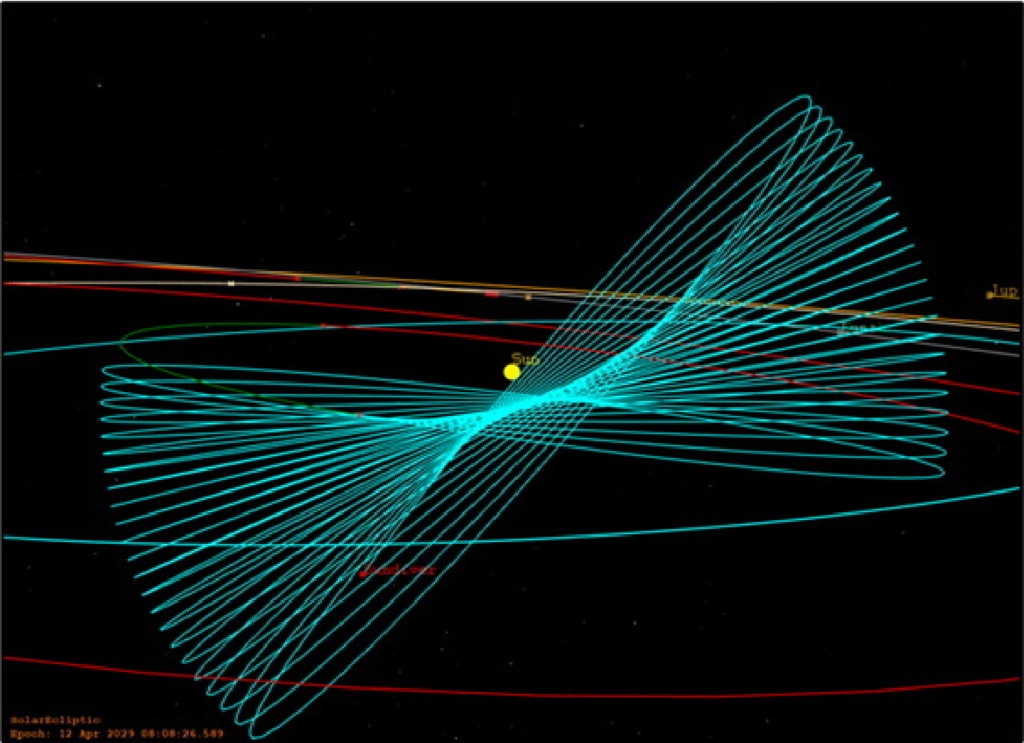Some parts of the solar system are exceptionally hard to reach. Despite the interesting scientific data we could collect from that location, we’ve never managed to send a probe to one of the poles of the Sun. Nor have we been able to send many spacecraft to exciting places in the Oort cloud of other parts of the outer solar system. Voyager 1, which currently holds the record for being the farthest craft away from Earth, took over 40 years to reach the point where it is now. Even if it did pass by something interesting on its way, its antiquated scientific equipment would be less useful than more modern technology.
Cost is one of the main bottlenecks for a lack of exploratory missions to these parts of the solar system. Large-scale missions like Voyager and New Horizons cost hundreds of millions of dollars and take decades to plan. A smaller, cheaper, and more flexible option to get a spacecraft to these hard-to-reach places would be invaluable.
Enter the Sundiver concept. Perhaps named after the famous 80s sci-fi novel of the same name, or maybe an Australian project suggested last decade that was never funded, the Sundiver platform is built off a concept we’ve discussed here on UT before. Essentially it utilizes a modern-day solar sail, with a set of miniaturized technologies, to allow the craft to carry small payloads to out-of-the-way places in the solar system at breathtaking speeds compared to old propulsion technologies. A new paper from authors at various institutions defines the project and details some potential missions it could host.
The original Sundiver concept was developed as part of a NASA Institute for Advanced Concepts grant that looked at a way to get a telescope to the solar gravitational lens point, about 500 AU away from the Sun. We did a story on that project back when it was funded. But the underlying technology is helpful for much more than just getting a specific payload to a point very far away. A solar sail could speed to almost any point in the solar system, drop any small payload off, or simply do a flyby to do science there.
Solars sails have gotten plenty of media attention and technology demonstrations lately, with the Lightsail and IKAROS missions completed successfully in the last few years. A few more are still to come, including NEAScout and OKEANOS, which will further derisk the technology at the heart of the Sundiver concept.
The mission concept in the paper partly defines those technologies. The authors calculate that a complete Sundiver mission could carry as much as 15 kg of scientific payload at up to 7 AU per year – almost double the speed of Voyager, the current fastest mission to the outer solar system. But to do that, it has to take a relatively dangerous route, by literally diving in towards the Sun.

Credit – Turyshev et al.
Solar sails pushing efficiency is directly proportional to the amount of sunlight that falls on the sails. Therefore, the closer the craft is to the Sun, the more it can speed up. And being close to the Sun had another significant advantage – a Sundiver can use its gravitational well to act as a slingshot in a gravity assist maneuver.
Using the Sun’s gravity could propel a Sundiver to almost anywhere in the solar system relatively quickly, and the paper details some of the more unique places it could take a look at. As mentioned before, the whole project concept was spun off a NASA Institute for Advanced Concepts grant to get a telescope to the solar gravitational lens point, but closer to home objectives such as visiting Uranus, which was the highest priority in the recently released decadal survey, would also be made significantly easier with Sundiver technology.
Most of that technology is already mature enough to be assembled into a functional solar sailing system. But the team has even more ambitious plans that utilize technologies that are still in development, such as NASA’s CubeSat Proximity Operations Demonstration project, which showed that CubeSats can maneuver together to join into larger satellites once already out in space.

Credit – Turyshev et al.
That ability could further decrease the cost of some of these missions, which are already expected to be lower than chemical propulsion missions and could reuse many of the same parts. Even the most expensive would only come in at an expected $100M, a far cry from the billions spent on their predecessors.
While the system itself might not be a cure-all for answering all the astronomical questions scientists have – for example, it would be challenging to have a Sundiver stop in orbit around a planet – it offers a unique way to get to places where no probe has gone before. NASA appears to be continuing to sponsor its development, so maybe in a few years, we’ll begin to see a fleet of ultra-fast solar sailing probes zipping throughout the solar system. That would be quite a site.
Learn More:
Turyshev et al – Science opportunities with solar sailing smallsats
UT – A Mission to Reach the Solar Gravitational Lens in 30 Years
UT – Using the Sun as a Gravitational Lens Would Let Us See Exoplanets With Incredible Resolution
UT – A new Kind of Solar Sail Could let us Explore Difficult Places to Reach in the Solar System
Lead Image:
Trajectory map of a solar sail reaching the solar poles.
Credit – Turyshev et al.

